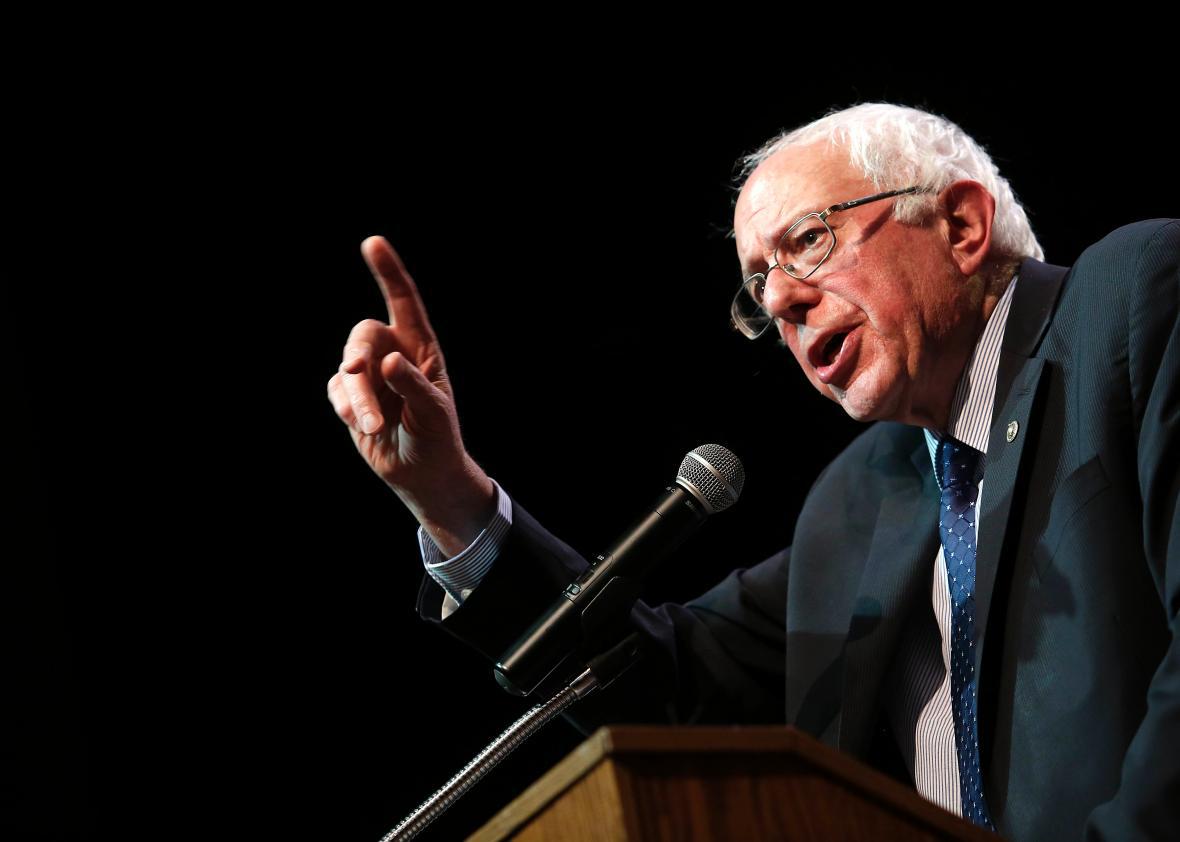Bernie Sanders has spoken many, many times about his desire to break up America’s largest banks. But during his big speech Tuesday on Wall Street reform, the senator and presidential candidate added a twist by promising to do it without the help of any new legislation. To top it off, he vowed to finish the job within the first year of his administration.
This is something of a, well, left turn. Ever since the financial crisis, progressives—lately led by Sen. Elizabeth Warren as well as Sanders—have agitated for the return of the Glass-Steagall Act, the Depression-era legislation that separated commercial and investment banking. That law was, notoriously, repealed by President Bill Clinton, and though it’s debatable how much its abolition contributed to the Wall Street meltdown, bringing it back would certainly cut some megabanks down to size. But doing so would require an act of Congress, which itself would take an act of God.
So Sanders has borrowed another idea that’s been floating around liberal circles for a while: Take down Bank of America, Citibank, and their peers with laws that are already on the books. Specifically, he wants to use Section 121 of the Dodd-Frank Act, which gives regulators the power to break apart large financial institutions they think pose a “grave threat to the financial stability of the United States.”
Section 121 is, potentially, an extremely powerful tool. I say potentially, because nobody seems quite sure exactly how it can be used. The words “grave threat” are, after all, a tad vague, which makes it unclear exactly when it can be applied to firms that aren’t on the verge of immediate collapse. Nonetheless, it lets regulators order banks, insurers, and other companies involved in finance to liquidate assets, shut down lines of business, or stop offering certain products—which is to say, shrink.
But by design, it’s also very, very hard to implement. First, the Federal Reserve Board of Governors must decide that a bank (or shadow bank) does indeed pose a “grave threat” to America’s financial well-being. Then, two-thirds of the Financial Stability Oversight Council have to vote to start breaking it up.
And, as Quartz’s Tim Fernholz wrote Tuesday, this is where Sanders’ promise to start smashing heads on Wall Street rings a bit hollow. The Fed’s board of governors has seven seats, and most of its members are appointed to 14-year terms, with the exception of the chairman and vice chairman, who sit for four. That makes it tricky to stack the Fed with sympathetic regulators eager to chop banks down to size. Meanwhile, the FSOC is a 10-member board of regulators, including everyone from the Fed chairman to the Treasury secretary to the chairman of the National Credit Union Administration. While these are all presidential appointees, Sanders would have to get his picks through Congress, which would be far harder if business-minded Democrats and Republicans suspect that these men and women will start wreaking havoc on their favorite donors.
Whether or not Sanders’ promise is realistic—even if he gets his pick of regulators, it’s anybody’s guess how the courts will interpret Section 121 authority after the inevitable lawsuits—it’s politically interesting. Glass-Steagall, which Sanders would still like to resurrect, has long been a litmus test among progressives. But Sanders is now trying to mainstream the idea that a president could break up the banks while leapfrogging Congress, as long as he has the right appointees in place. I’m guessing that will intensify confirmation battles under any Democratic presidency, even for formerly obscure posts. Suddenly, Bernie fans and those who fear them have a reason to care about the job of chief credit union regulator. Go figure.
